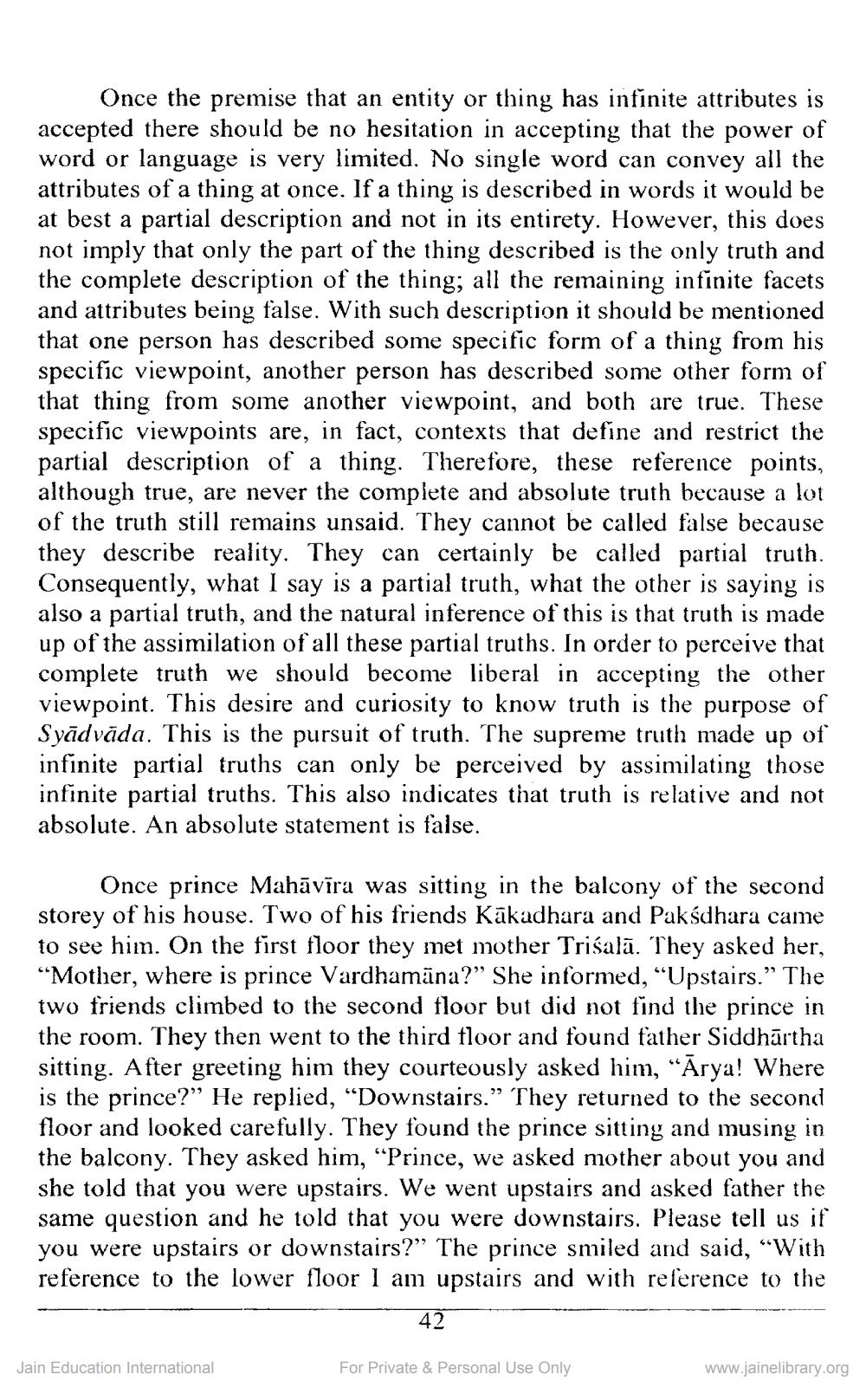________________
Once the premise that an entity or thing has infinite attributes is accepted there should be no hesitation in accepting that the power of word or language is very limited. No single word can convey all the attributes of a thing at once. If a thing is described in words it would be at best a partial description and not in its entirety. However, this does not imply that only the part of the thing described is the only truth and the complete description of the thing; all the remaining infinite facets and attributes being false. With such description it should be mentioned that one person has described some specific form of a thing from his specific viewpoint, another person has described some other form of that thing from some another viewpoint, and both are true. These specific viewpoints are, in fact, contexts that define and restrict the partial description of a thing. Therefore, these reference points, although true, are never the complete and absolute truth because a lot of the truth still remains unsaid. They cannot be called false because they describe reality. They can certainly be called partial truth. Consequently, what I say is a partial truth, what the other is saying is also a partial truth, and the natural inference of this is that truth is made up of the assimilation of all these partial truths. In order to perceive that complete truth we should become liberal in accepting the other viewpoint. This desire and curiosity to know truth is the purpose of Syādväda. This is the pursuit of truth. The supreme truth made up of infinite partial truths can only be perceived by assimilating those infinite partial truths. This also indicates that truth is relative and not absolute. An absolute statement is false.
Once prince Mahāvīra was sitting in the balcony of the second storey of his house. Two of his friends Kākadhara and Pakódhara came to see him. On the first floor they met mother Trisalā. They asked her, "Mother, where is prince Vardhamāna?” She informed, “Upstairs." The two friends climbed to the second floor but did not find the prince in the room. They then went to the third floor and found father Siddhārtha sitting. After greeting him they courteously asked him, “Ārya! Where is the prince?” He replied, “Downstairs." They returned to the second floor and looked carefully. They found the prince sitting and musing in the balcony. They asked him, “Prince, we asked mother about you and she told that you were upstairs. We went upstairs and asked father the same question and he told that you were downstairs. Please tell us if you were upstairs or downstairs?” The prince smiled and said, “With reference to the lower floor 1 am upstairs and with reference to the
42
Jain Education International
For Private & Personal Use Only
www.jainelibrary.org




